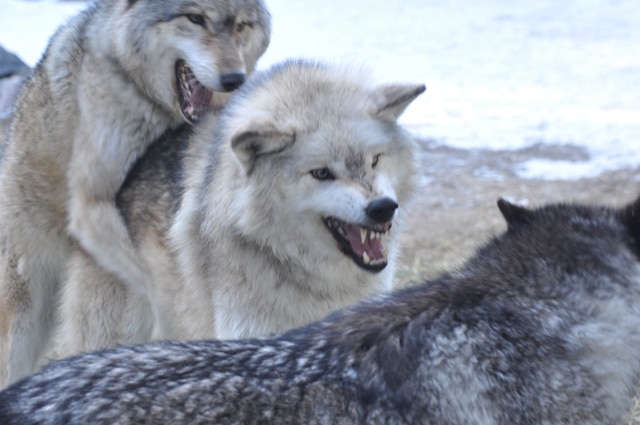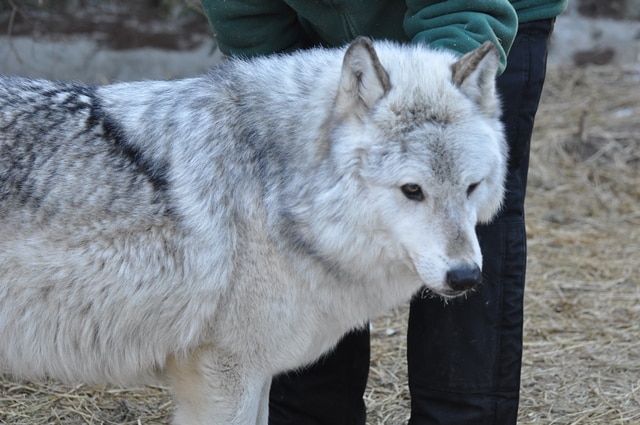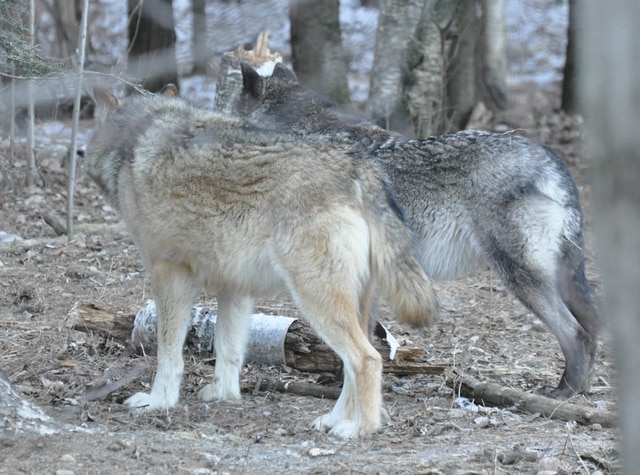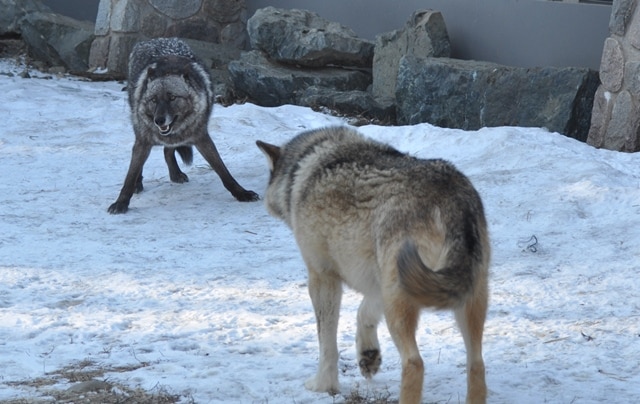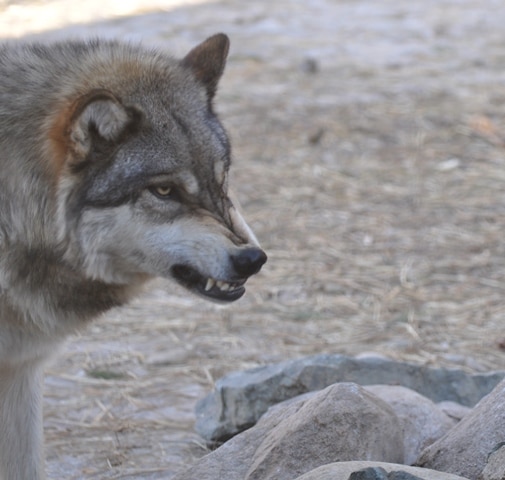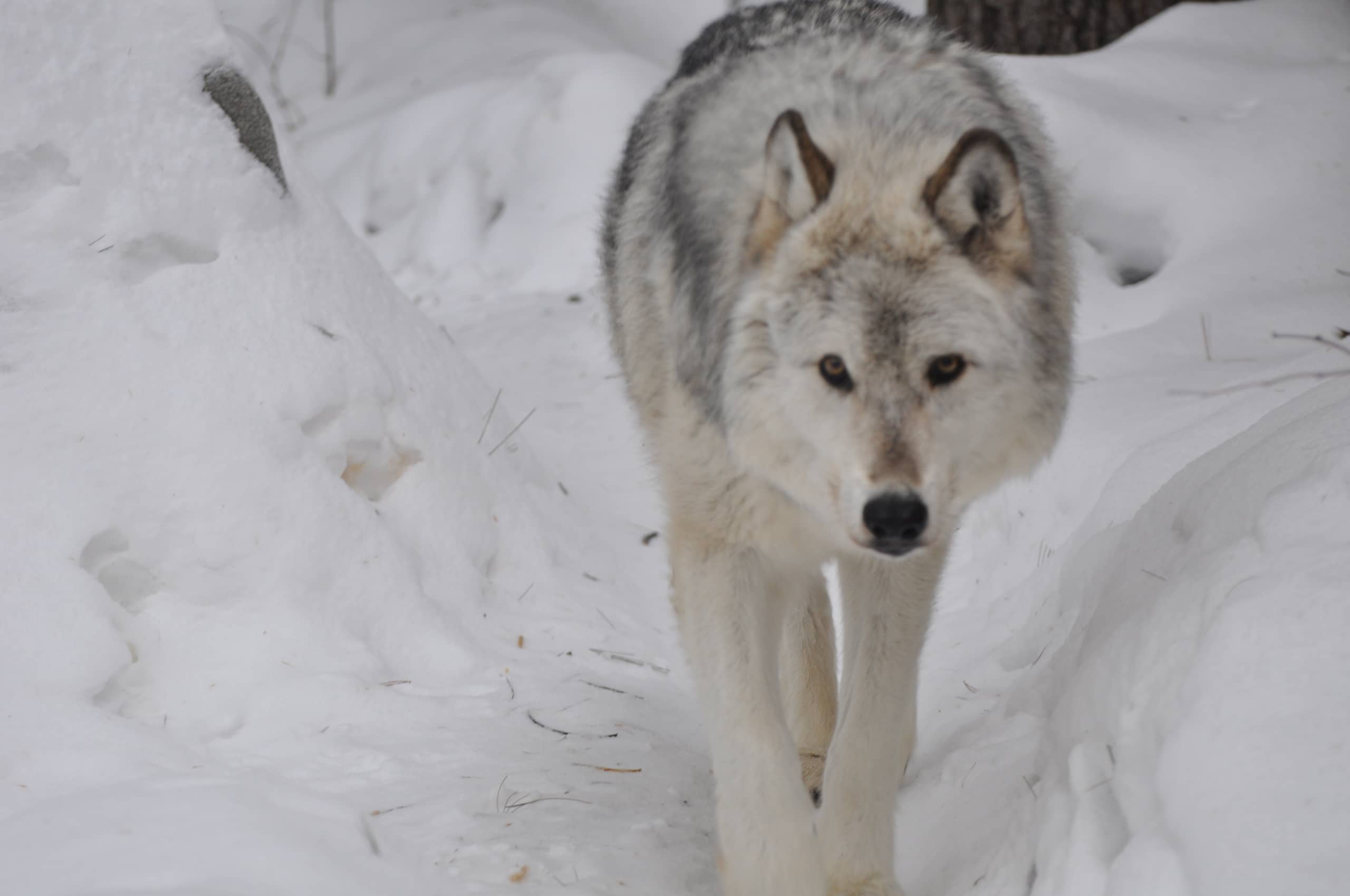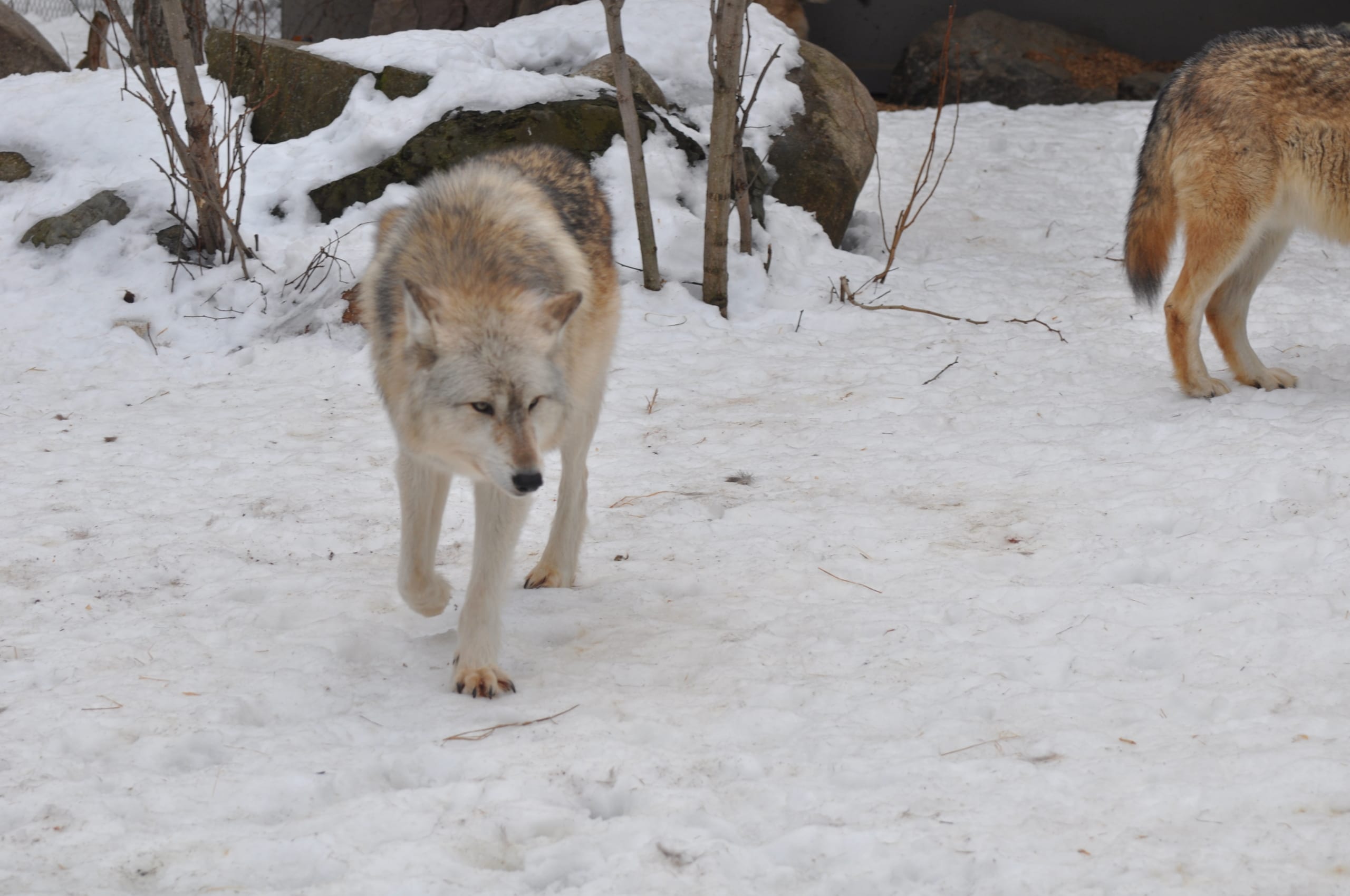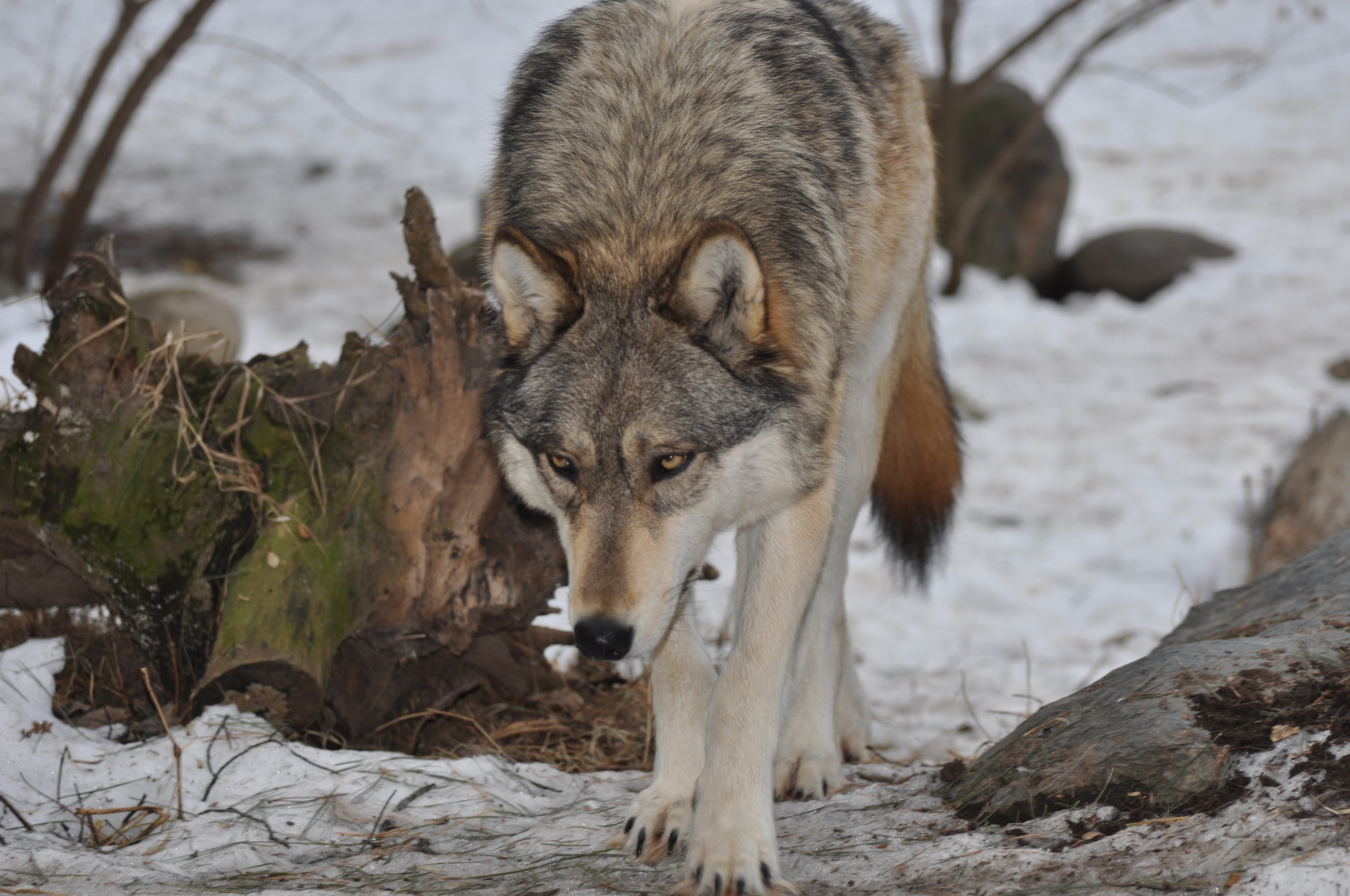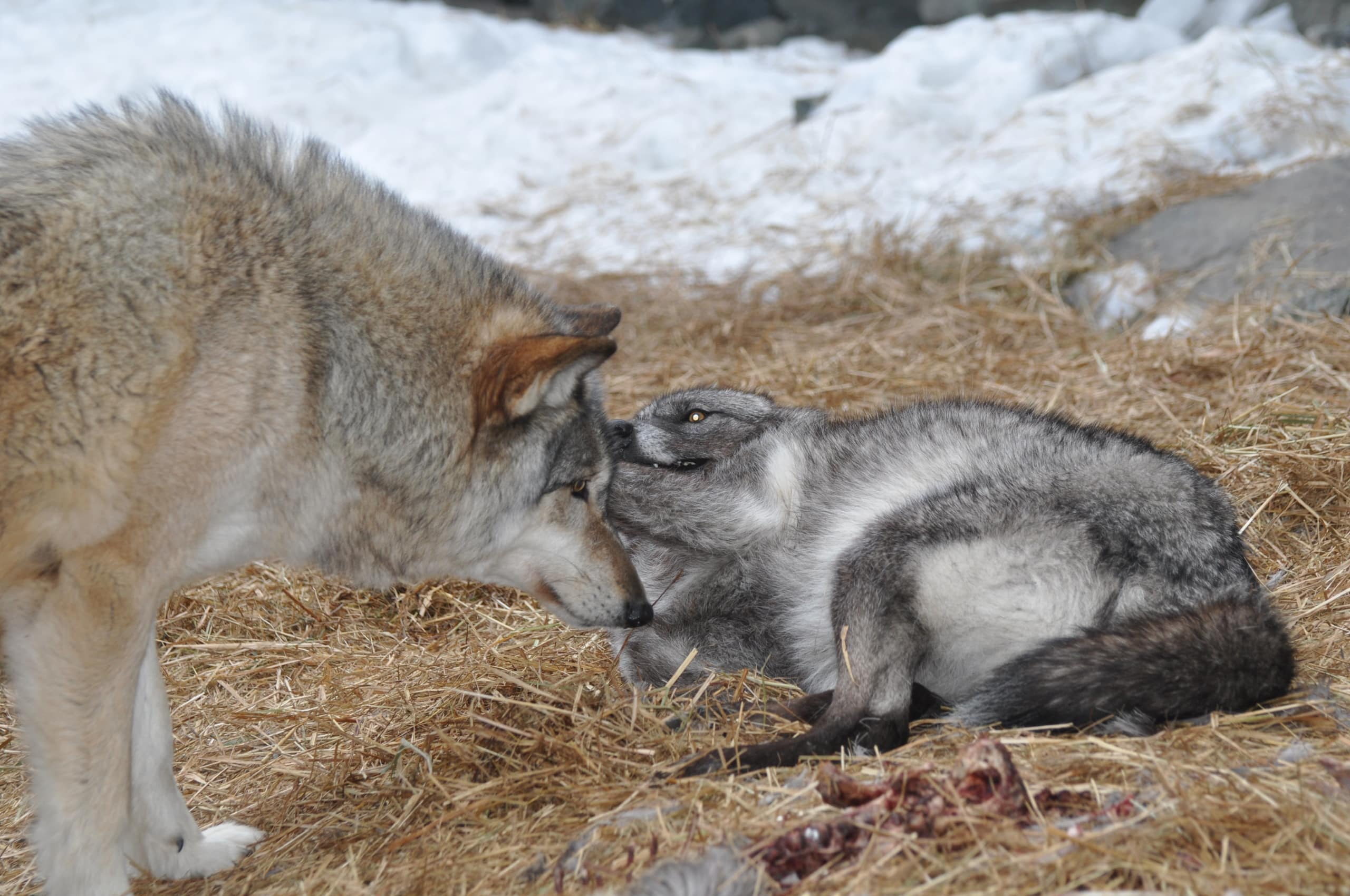When Aidan gets a bit frustrated, he tends to dominate Denali (Aidan on Denali’s back)… but that doesn’t seem to bother Denali as much as when Luna is in his personal space. There seems to be about a one-foot buffer around Denali’s face that will get the annoyed threat display response if you enter his space. Fortunately, Denali has a good demeanor and within minutes of this facial expression, he will do a playbow and tail wag to instigate more interaction.
Archives
Grizzer likes the wolf care checks when we massage his coat and do a good check for ectoparasites and other issues. His facial expressions certainly tell us that it feels good. During a Wolf Enrichment Webinar last week, the pack was very distracted and seemed to be focused on the upper wood line of the enclosure. Based on the pack’s behavior, I asked a staff member to go to the back door and check it out. We had a wolf adjacent to the fence line by the Exhibit Pack. I don’t know who was more startled, the wolf or the staff member. The wolf took off and circled behind the enclosure to the East side enclosure. Grizzer didn’t respond much at the time, but Aidan was sure hopping and running the fence line. Several bouts of howling were recorded on the Wolf Watch program on Friday night (the night before the webinar), I guess we have our answer as to the stimuli.
There are times when Aidan shows his tendency to pair bond with Luna (as shown in this photo, standing shoulder to shoulder with Luna), then there are times when Luna drives him to avoidance behavior. We know Aidan can pair bond. We have fond memories of he and Maya pair bonding in what turned out to be the last few weeks of Maya’s life. Aidan is extremely possessive of pups (yes, even Luna) and has a strong associative behavior with Denali. But, pair bonding takes two and when the energy level is calm, we see the possibility in Luna. Unfortunately, these calm moments don’t last long and she’s back to wrestling with Boltz or tossing a deer hide in the air. Aidan is strong and we are on a good path of treatment for his Discoid Lupus. The presence of pups next summer will stimulate prolactin. We know Aidan can bond, maybe the prolactin stimuli will be to key to maturing Luna’s behavior.
So sorry for the delay in postings. We celebrated Luna’s 3rd birthday on March 25th with a webinar featuring a short clip of her birthday. She received a cow leg, and in a behavior uncharacteristic of Luna, chose to lie quietly with her cow leg until the webinar ended. Of course, moments later, she was wrestling and defending her leg from Denali and Boltz, but proceeded to carry it around, drop it in front of the other wolves wolves, then growl in defense of the leg. This went on for hours after the webinar, and reminded us of Lucas’s behavior from the 1993 litter. Lucas was the only male in a litter of 4 and without another male, he tended to stay out of the rank order. He was famous for carrying deer heads, dropping them in front of the dominant female, MacKenzie, then growling at her if she showed interest.
This week’s image shows Luna doing a play bow which was followed by an invite chase behavior. I posted the video of this on YouTube last week, Aidan was pawing the ground like he was in a bull fight. Could this be Luna’s idea of pair bonding?
Boltz was three years old on March 17th, and in honor of his birthday, we attempted to provide him a significant treat in the form of a cow leg. Unfortunately, Boltz’s lack of confidence in keeping the steer leg resulted in Luna spending most of the webinar enjoying it, with only a brief loss to Denali. As the evening advanced, surveillance video captured Boltz enjoying the leg 4 hours after the webinar ended. Boltz did manage to guard 3 beaver feet. As the photo shows, his lip curl is sufficient to keep the other wolves at bay.
Luna has become extremely excitable and interactive with other members of the exhibit pack, as seen in this week’s youtube video. Perhaps this excitement is coming from all the new smells and weather patterns we’re seeing with the coming of spring. Winter hormones will soon be on the decline, as the breeding season has come to a close.
We continue to see a lot of howling behavior from Grizzer towards the back of his enclosure. We likely have some activity from other animals in the area surrounding the International Wolf Center. There have been several sightings of Lynx and Bobcats in the Ely area, and prior to the melt, we’ve seen quite a few signs of wild wolves nearby. With the melt, it’s very difficult to determine what is hanging around the enclosure, but Grizzer is certainly aware of it.
The International Wolf Center is also hosting a fundraiser to help us expand the Wolf Lab, to allow more space for new pups, but also an indoor enclosure that older, or sick wolves may be brought into for better care. This expansion would connect directly with Grizzer’s enclosure, allowing him to come into the indoor enclosure with ease if needed! Please keep an eye on our facebook profile for more information on how you can support this project!
Wolf physiology is made to thrive in winter, right down to the toes. In this week’s photo, Denali demonstrates the spread of the wolf’s paw, allowing them more surface area on their step. This can help their stability, but also their ability to reduce the amount they will sink into the snow. Their toes have partial interdigital webbing, a segment of skin that can stretch between toes to further this surface area.
We still see a bit of the direct stares and tail postures from the testing phase Boltz went through, but there’s not much follow-up now. We’re still working on trust and confidence issues with Boltz, in this week’s youtube you can see Boltz approach wolf care staff, but not necessarily interact with them. He has his good days, and his weary days. As I write this, we’re experiencing some gusts of wind at the center, which makes for a nervous Boltz. He has calmed down for now, and is resting atop the slate den in the enclosure.
There’s no shortage of scraps now that spring is arriving. We quickly transitioned from temperatures below zero, to reaching highs in the 50’s. As I write this, we’re forecasted for 60 degree Fahrenheit weather today. With all of the snow caches surfacing, there’s a lot to possess and re-cache. In this week’s photo you can see Aidan investigating a scrap that Luna had hidden in the straw. This straw pile will remain in the enclosure until our Workin’ for Wolves crew comes later this spring to help us clean up (We’ve got a lot of work to do!).

The International Wolf Center uses science-based education to teach and inspire the world about wolves, their ecology, and the wolf-human relationship.

